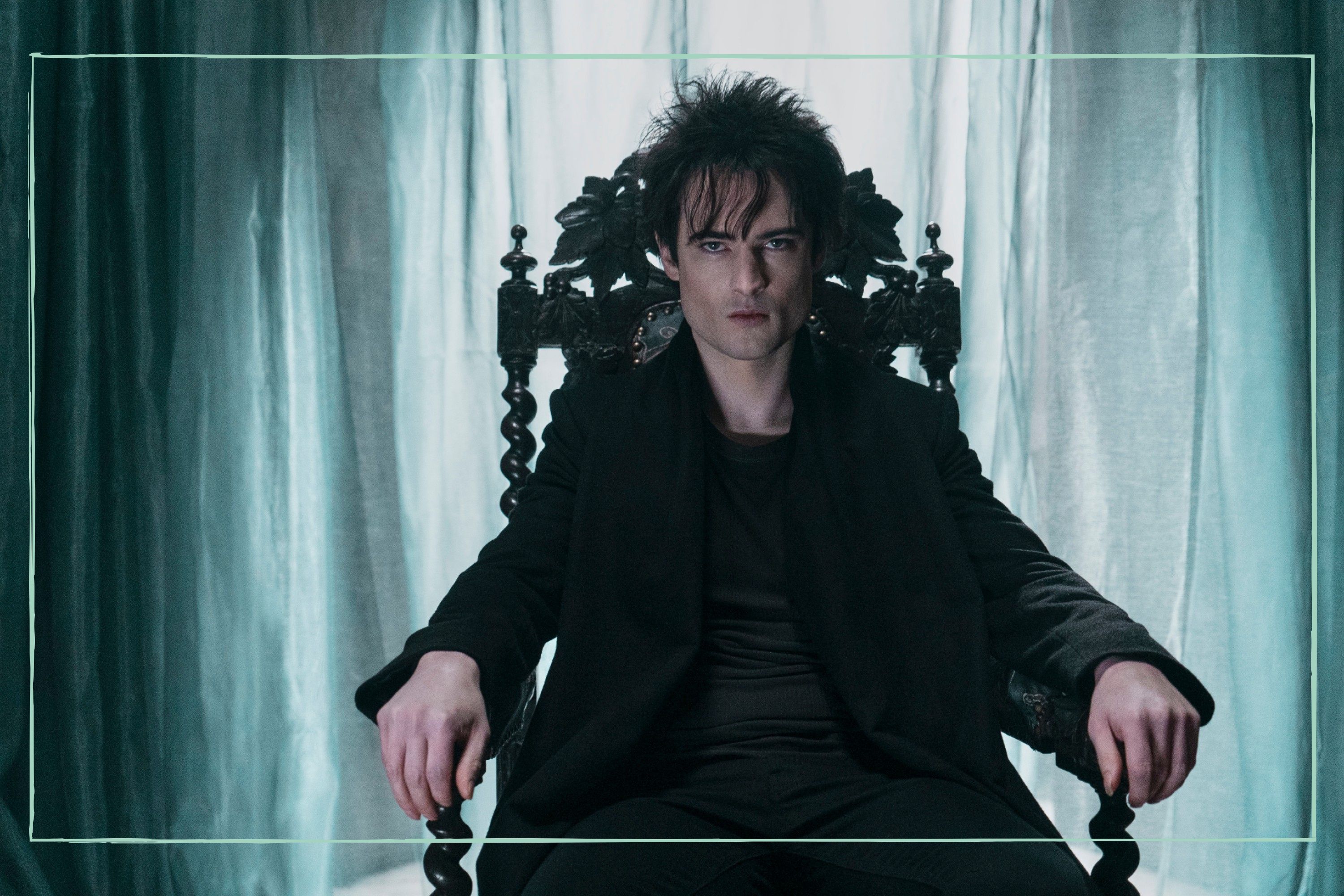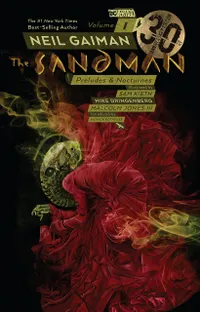What is The Sandman based on? The story and myth explained
Swat up on how The Sandman came to be


Viewers tuning into Netflix's new fantasy series are eager to know what The Sandman is based on - from the story on screen to the centuries old myth.
With The Sandman release date officially here - excitement and information about the series is high. Be it details of who is in the star-studded The Sandman cast to where The Sandman is filmed (hint: it's in the UK). And of course how The Sandman story came to be.
New audience members might be surprised to learn that it started life way before the 2022 television series - boasting quite a large fan following too. Here's exactly what you need to know about how it came to be (plus the downlow on that The Sandman ending and a season two)
What is The Sandman based on?
The Sandman on Netflix is based on the comics of the same name by Neil Gaiman. There were 75 comic book issues of The Sandman in total - which were released from 1989 to 1996.
The Sandman character is part of the DC universe, and author Neil helped revive The Sandman after getting a call from DC Comics editor Karen Berger in 1987. She asked if he would be interested in writing a monthly series based on one of the forgotten DC characters to revive and make his own - The Sandman.
Go back to basics and read Volume 1 of Neil Gaiman's The Sandman - that inspired the new Netflix series.
In 2018, Neil Gaiman oversaw a revival - four new comic-book series published under the banner The Sandman Universe.
Speaking about the long-awaited TV adaptation, Neil, who's an executive producer on the series, has said the reason it took so long is because he wanted to get it right. He said: "I didn’t have faith that we’d always get here, but I had faith that the important thing was to stop bad versions being made.
Parenting advice, hot topics, best buys and family finance tips delivered straight to your inbox.
"Once a bad version is made, you never quite come back from that. It may sound silly, but when I was 14 or 15, my favourite comic was Howard the Duck... And then A New Breed of Hero came out. Howard the Duck became a bad joke. I never wanted that to happen to Sandman and I saw scripts that would have made that happen."
He added: "This adaptation is the first time that I’ve been willing to come on board. We've reached a point that really did not exist when The Sandman comics began. Longer format, novelistic television series now have the special effects and budgets to bring this world to life."
What is The Sandman graphic novel about?
The Sandman follows Morpheus, also known as Dream, as he's captured by a black magic occult group in 1916 and imprisoned and tries to escape. In 1988 - the year Neil Gaiman began working on the series - Dream finally manages to escape and spends the remaining issues trying to regain control of the world of Dreaming and the powers he once possessed.
Dream is the personification of all dreams and stories. He can make himself look like pretty much anything, though he's usually portrayed as a pale man with dark eyes.
The Sandman alternated between long narrative arcs and one-off stories over its run. But the main story follows Dream, and the comic’s most famous and celebrated stories tend to put him at the centre.
When asked to describe Sandman in under 25 words, Neil Gaiman said: "The Lord of Dreams learns that one must change or die, and makes his decision."

How many The Sandman volumes are there?
The Sandman was originally published as a monthly comic. But today, you’re better off reading it in book form. There are ten volumes of The Sandman altogether, which groups the stories together for easy reading
It begins with Preludes and Nocturnes and ends with The Wake - which also give names to the biggest plot arcs of the series.
What order should I read The Sandman?
- Preludes & Nocturnes. Collects: Sandman #1 To #8
- The Doll's House. Collects: Sandman #9 To #16
- Dream Country. Collects: Sandman #17 To #20
- Season of Mists. Collects: Sandman #21 To #28
- A Game of You. Collects: Sandman #32 To #37
- Fables and Reflections. Collects: Sandman #29 To #31, #38 To #40, #50 And Sandman Special #1
- Brief Lives. Collects: The Sandman #41 To #49
- World’s End. Collects: The Sandman #51 To #56
- The Kindly Ones. Collects: The Sandman #57 To #69
- The Wake. Collects: The Sandman #70 To #75
Where did the myth of The Sandman come from?
The myth of The Sandman first originated in 18th-century German dictionaries, which briefly described the German idiom "der Sandmann kommt" - "Sandman is coming." This was used to tease sleepy-looking children.
The first story about the Sandman was published in 1818 by German writer E.T.A Hoffman and was quite scary. "Der Sandmann" begins with an exasperated nurse telling a story about a mythical creature who throws sand in the eyes of little children who won't go to sleep, causing them to fall out of their sockets. The Sandman then collects the eyeballs in a sack and carries them to his home on the dark side of the moon, where he feeds them to his children.
In 1841, Hans Christian Andersen published a fairy tale called "Ole Lukøie" — Ole being a Danish first name and Lukøie translating to "shut your eye." The character always dressed in silk pyjamas and carried a colourful umbrella and was never referred to by the author as the Sandman, but "The Sandman" is the title most English translations assign to the fairy tale.
The Sandman: Comic to Screen adaptation
There has been talk of a screen adaptation since the 1990s. It was initially set to become a film, but floundered in development until Joseph Gordon-Levitt pitched the film to Warner Bros. in 2013 with writer David S. Goyer.
However, Joseph Gordon-Levitt left due to creative differences in 2016 so it never happened. In June 2019, Netflix announced the TV adaptation.
Another hitch happened in the form of Coronavirus. The series was set to start filming in May 2020, however, production was paused due to the pandemic. Disappointed but not defeated, Neil Gaiman said that the crew were "taking the opportunity to get the scripts as good as we can." And finally filming got underway later that same year.
Video of the Week

Robyn is a freelance celebrity journalist with ten years experience in the industry. While studying for a degree in Media and Cultural Studies at London College of Communication, she did internships at Now and Heat magazines. After graduating, she landed a job at Star magazine, where she worked her way up to features editor. She then worked at Future as Deputy Celebrity Content Director across Woman, Woman’s Own, Woman’s Weekly and Woman & Home magazines.
